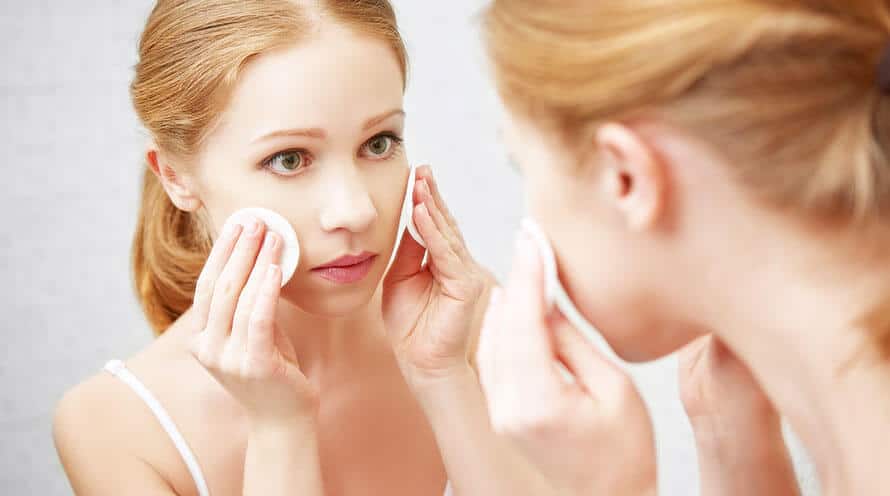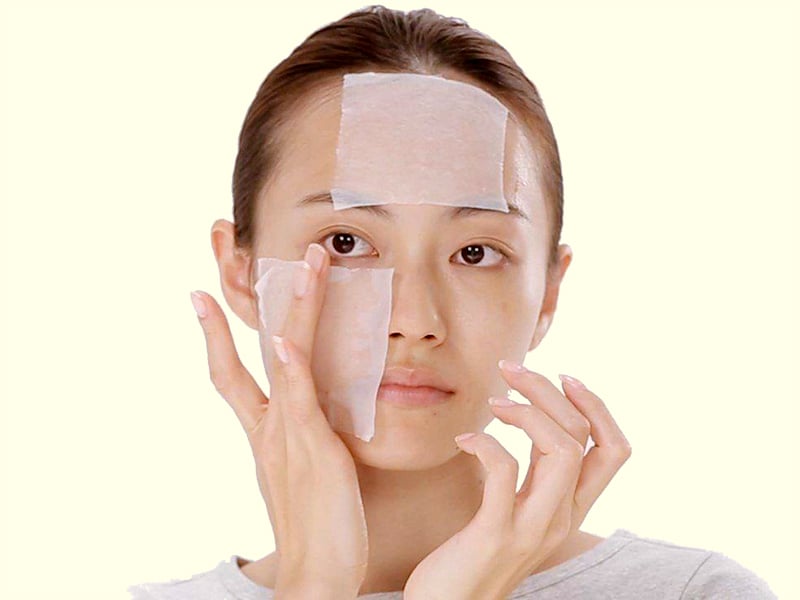Makeup removal with specialized products offers an extremely effective cleansing ability, providing a clean, smooth, and clear complexion while preventing clogged pores that can lead to acne or dull skin. However, many of us often make common mistakes when removing makeup, causing the skin to deteriorate and lose its firmness over time. Therefore, if you want to protect your skin from damage and premature aging, you should immediately correct the following makeup removal habits.

Common Mistakes in Makeup Removal Can Deteriorate Skin Health
Rubbing Aggressively
To save time, many people tend to use all their strength to rub the cotton pad on their skin to remove makeup and dirt. This method is not only ineffective but also damages the skin, causing it to deteriorate quickly. Aggressive rubbing does not make the skin cleaner, but over time, it thins the stratum corneum and even promotes the formation of wrinkles, accelerating the aging process.
Inadequate Eye Makeup Removal
Similar to facial makeup removal, eye makeup removal also requires a gentle touch; otherwise, it will accentuate the wrinkles around the eyes. Use a makeup remover, cotton pads, and cotton swabs. First, soak a cotton pad with makeup remover and gently place it over your eyes, eyebrows, and lips for a moment. This will help soften and loosen the makeup. Then, use a cotton swab dipped in the remover to gently wipe the corners of your eyes and inner eyelids.
Overly Long Makeup Removal Sessions
Don’t fall into the trap of thinking that longer makeup removal sessions or more frequent face washing throughout the day will benefit your skin. Over-cleansing will strip the skin of its natural oils, leading to dryness, irritation, and increased acne breakouts.

Avoid Excessive Makeup Removal and Frequent Face Washing
Don’t continue makeup removal until your skin turns red and stings. Instead, consider the ideal timing adopted by many skincare enthusiasts: 5 minutes for the makeup removal step, including applying the product and massaging the skin, and 1-2 minutes for cleansing the skin with a facial cleanser.
Neglecting the Perimeter of the Face
The perimeter of the face, including the hairline, jawline, and neck, is also a significant area for makeup and sunscreen residue. If you don’t thoroughly cleanse these areas, you may soon experience hidden acne and inflammatory acne due to clogged pores. Be sure to treat this area with care and avoid aggressive rubbing.
The Body’s Forgotten Area: Uncovering the Often-Neglected Body Part That Could Impact Your Health
“It’s easy to forget about certain body parts when it comes to daily hygiene, but one area that is often neglected can lead to a host of skin problems. The area in question is the ear, and the issues that can arise from poor ear hygiene include infections, odor, and even seborrheic dermatitis. Yes, your ears need just as much attention as any other part of your body when it comes to staying clean and healthy.”
Is Bone Broth Good for Making Pho?
The culinary world, especially the art of crafting delectable broths for pho, is an ancient tradition that has evolved over centuries. The key to this iconic Vietnamese dish lies in the delicate balance of flavors achieved through a meticulous bone broth preparation process. Crafting this broth is an art, with chefs carefully selecting pork and beef bones to simmer for hours, unlocking a depth of flavor and a host of health benefits that have become the hallmark of this beloved culinary treasure.






































